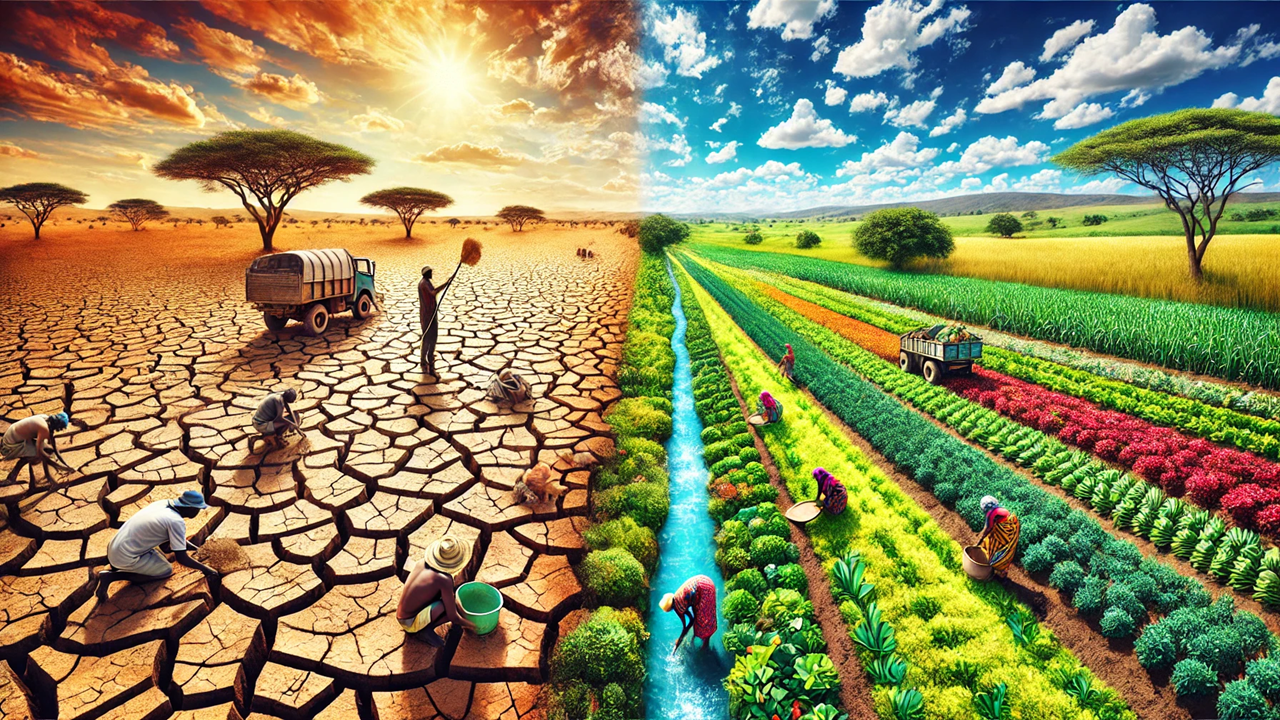Rain or Drought: How Climate Shapes Job Markets in Sub-Saharan Africa
A World Bank report reveals the profound impact of climatic water variability on employment in Sub-Saharan Africa. Dry periods decrease employment by 2.5 percent, while wet periods boost it by 4 percent. Women and rural, low-skilled workers are most affected. Historical livelihood strategies and irrigation infrastructure significantly mediate these impacts.

Water Variability’s Impact on Jobs
A recent World Bank report titled "Weather, Water, and Work" delves into how climatic water variability is reshaping labor markets in Sub-Saharan Africa. By analyzing data from half a million individuals collected between 2005 and 2018, the study offers a comprehensive view of the region's vulnerability to both extreme dryness and excessive moisture.
Dry Periods and Employment Decline
The report highlights that extremely dry periods reduce employment by 2.5 percentage points on average. These dry spells hit rural, poorer, and agriculture-dependent areas hardest. Low-skilled workers, particularly women, bear the brunt of these dry shocks. The study suggests that water scarcity can lead to significant employment reductions, primarily because agriculture, which employs a large portion of the population, suffers immensely during these periods.
Wet Periods Boost Job Opportunities
Conversely, the research shows that wet periods, characterized by an abundance of soil moisture, can increase employment by 4 percentage points. These wet shocks benefit men more than women and are particularly advantageous for younger workers. The increase in agricultural productivity during these periods creates more job opportunities, highlighting the direct link between water availability and employment.
The Role of Irrigation Infrastructure
Irrigation infrastructure plays a crucial role in mediating the effects of water variability. Areas equipped with irrigation systems are more resilient to dry shocks but also more dependent on water availability. The presence of irrigation can amplify the impacts of water variability, making these regions more vulnerable to droughts. However, irrigation also provides significant employment opportunities, underscoring the need for improved management practices to maximize its benefits.
Historical Livelihood Strategies
The study also examines how historical livelihood strategies influence the impact of water shocks on employment. Regions with a history of agriculture see significant employment increases during wet periods but suffer more during dry periods. In contrast, hunter-fisher-gatherer societies show resilience during dry periods and benefit from wet shocks. Pastoral societies, however, are more adversely affected by dry shocks and do not gain as much from wet periods.
Implications for Policy and Adaptation
These findings have critical implications for policy and climate adaptation strategies. Targeted interventions are necessary to support low-skilled agricultural workers in rural areas, who are most vulnerable to climate change. Investments in irrigation infrastructure must be coupled with better management practices to ensure they provide the intended benefits without increasing vulnerability to water variability.
Moreover, understanding the role of historical livelihood strategies can help tailor adaptation measures to specific regional needs. For instance, regions with a history of agriculture may benefit more from flood-based agricultural systems, while hunter-fisher-gatherer societies might need different strategies to enhance their resilience to climate change.
The World Bank's "Weather, Water, and Work" report underscores the significant and varied impacts of water variability on employment in Sub-Saharan Africa. By highlighting the critical role of irrigation and historical livelihood strategies, the report provides valuable insights for designing effective policies and investments to manage water risks and build resilience against climate change. Ensuring that these measures are inclusive and consider the needs of the most vulnerable populations, particularly women and rural low-skilled workers, is essential for sustainable development in the region.
- FIRST PUBLISHED IN:
- Devdiscourse
ALSO READ
TERI-UNOPS Initiative Empowered 27000 School Children in Uttar Pradesh on Climate Change, Health, and Hygiene Practices
Climate Change Undermines Human Rights, Warns WMO Chief at UN Human Rights Council
Tackling the Triple Threat: Climate Change, Poverty, and Hunger in Asia-Pacific
Climate Change to Spike Women's Water Collection Time by 30% by 2050
Jairam Ramesh Slams Modi Government Over Unemployment and Price Rise










